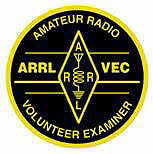A Simulated Emergency Test is exactly what the name implies: A planned simulation of an emergency designed to test our ability to respond to both anticipated circumstances and unanticipated events. The purpose of a SET is to:
- To find out the strengths and weaknesses of ARES and the National Traffic System (NTS), the Radio Amateur Civil Emergency Service (RACES) and other groups in providing emergency communications.
- To provide a public demonstration to served agencies such as Red Cross, Emergency Management, hospitals, and through the news media of the value to the public that Amateur Radio provides, particularly in time of need.
- To help radio amateurs gain experience in communications using standard procedures and a variety of modes under simulated- emergency conditions.
One important aspect of the SET is to ensure operations on emergency power and without a repeater. Carroll County is blessed with a repeater that operates from a facility that has extensive short-term and long-term backup power capability. However, the repeater has been known to have issues during adverse weather conditions.
UHF/VHF simplex operation is a challenge in our area due to trees and hills, so utilizing Near-Vertical-Incidence-Skywave (NVIS) on HF may be the better option. HF, for most of us, is a DX (distance) activity, so NVIS isn't something we normally work with. I've spoken about NVIS before, but the basic idea is to do what we normally try to avoid, operating with an antenna close to the ground, which causes more vertical propagation which bounces off the atmosphere and is reflected in a 100-500 mile cone surrounding the transmitter. Higher antennas will mostly skip right over nearby stations. I would recommend everyone consider having 80 and 40 meter antennas capable of being flown as low as 15ft above the ground. Due to the nature of atmospheric reflection, 40 and 80 meters tend to be the only reliable NVIS bands.
Operators should, whenever possible, be prepared to switch to backup power as part of the test, as a real emergency may very well include power outages.
The ARRL (Amateur Radio Relay League) and ARES (Amateur Radio Emergency Service) call for an annual Simulated Emergency Test (or SET for short), usually in October.
ARES groups from all over Georgia will participate in a multi-level emergency response exercise. We will create a series of local incidents to be handled by radio as well as participate in relaying statewide traffic via an HF net.
HF capability and working with the NTS is also a major component of this process, as in a real emergency normal communications systems may not be operating, so as many people with HF capability as possible should be prepared to operate as well – especially if they have backup power capability.
Although there has been nothing set in stone, there is a chance we may be able to coordinate our SET with the hospital and county.
We’ll need as many people available to participate as possible, so even if you don't feel prepared now, nothing will be thrown out there that you haven't received some form of instruction on.




